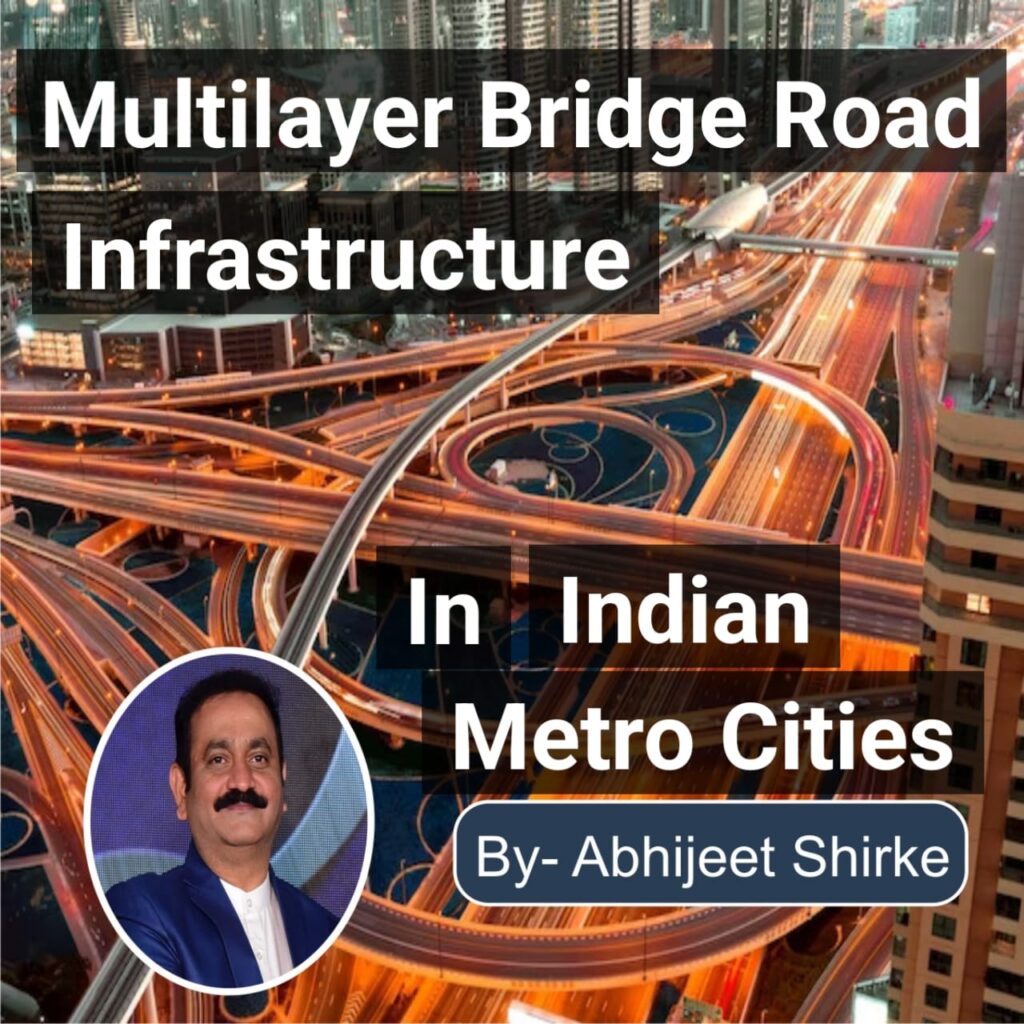
Challenges and Opportunities
Introduction
The multilayer bridge road infrastructure in metro cities across India plays a crucial role in shaping urban connectivity, reducing traffic congestion, and enhancing economic growth. As urbanisation continues to rise, the need for efficient and sustainable transportation solutions becomes imperative. This essay provides an overview of the current status of multilayer bridge road infrastructure, the challenges faced, and the potential benefits it brings to cities, the economy, and the environment.
Current Status of Traffic and Problems
Metro cities in India are grappling with severe traffic congestion due to the increasing number of vehicles on the road and inadequate road infrastructure. Congestion leads to extended travel times, wasted fuel, increased air pollution, and stress for commuters. The existing road network often struggles to accommodate the high demand, resulting in traffic bottlenecks and accidents.
Pollution and Travel Time
Traffic congestion impacts travel time and contributes significantly to air pollution. Congested roads lead to prolonged idling of vehicles, releasing harmful emissions into the air. Poor air quality poses health risks to residents and deteriorates the overall environment. Additionally, long travel times can have adverse effects on the quality of life, productivity, and mental well-being of citizens.
Infrastructure Development and Reducing Travel Time
The development of multilayer bridge road infrastructure offers a promising solution to alleviate traffic congestion and reduce travel time. By creating elevated roadways or tunnels, these structures provide alternative routes for vehicles, effectively increasing road capacity. It helps to disperse traffic, decrease congestion, and consequently reduce travel times for commuters.
Impact on GDP and Job Creation
Efficient transportation infrastructure has a direct impact on the economy. Reduced travel time leads to increased productivity as employees spend less time stuck in traffic. Moreover, businesses benefit from improved access to markets and suppliers. The multilayer bridge road infrastructure development generates employment opportunities, from construction jobs to maintenance and operations.
Government Support and PPP Projects
Recognizing the urgency of addressing traffic congestion and enhancing urban mobility, the Indian government has shown considerable support for infrastructure development. Public-Private Partnership (PPP) projects have gained prominence as a means to fund and execute large-scale infrastructure initiatives. By collaborating with private entities, the government aims to leverage its expertise and financial resources to expedite infrastructure projects.
PM Gati Shakti Initiative
The PM Gati Shakti initiative, launched by the Indian government, is a step towards comprehensive infrastructure development. This initiative aims to create a seamless transportation network by integrating different modes of transportation and optimizing logistics. Multilayer bridge road infrastructure aligns with the goals of PM Gati Shakti, as it contributes to the efficient movement of goods and people across the country.
Conclusion
The development of multilayer bridge road infrastructure in metro cities in India holds significant promise for addressing traffic congestion, reducing travel time, boosting economic growth, and improving overall urban livability. By investing in these projects, the government, in collaboration with private partners, can pave the way for a sustainable and connected future. As the nation progresses toward its urbanization goals, efficient transportation infrastructure will play a vital role in shaping the cities of tomorrow.